
National Science Review
Scope & Guideline
Elevating scientific discourse in the heart of Oxford.
Introduction
Aims and Scopes
- Interdisciplinary Research:
NSR encourages studies that bridge multiple scientific fields, fostering collaboration among physicists, chemists, biologists, and environmental scientists. - Advanced Materials and Nanotechnology:
Research focusing on the synthesis, characterization, and application of novel materials, particularly in nanotechnology, is a core focus area, reflecting the journal's commitment to materials science. - Environmental and Earth Sciences:
Papers addressing climate change, ecological impacts, and geological studies are prevalent, showcasing the journal's dedication to addressing global challenges. - Biomedical Innovations:
The journal publishes work related to biomedicine, including drug development, disease mechanisms, and medical technologies, highlighting the integration of biology and technology. - Artificial Intelligence and Machine Learning:
Emerging themes in AI applications across various scientific domains, including drug discovery, materials science, and environmental modeling, are a significant focus. - Energy and Sustainability:
Research on sustainable energy solutions, including batteries, renewable energy sources, and carbon capture technologies, is increasingly prominent.
Trending and Emerging
- Climate Change Solutions:
Research addressing mitigation strategies, carbon capture technologies, and the impacts of climate change on ecosystems is gaining attention, reflecting the urgency of environmental issues. - Biotechnology and Synthetic Biology:
Innovations in genetic engineering, CRISPR technologies, and synthetic biology are on the rise, showcasing the potential for transformative applications in medicine and agriculture. - Machine Learning and Data Science:
The integration of AI and machine learning in scientific research, particularly in data analysis, predictive modeling, and automation, is rapidly expanding. - Nanomaterials and Their Applications:
Research on nanomaterials, particularly in energy storage, catalysis, and biomedical applications, is increasingly prominent, reflecting advancements in materials science. - Health and Disease Mechanisms:
Papers focusing on the molecular and cellular mechanisms underlying diseases, especially in the context of COVID-19, have surged, highlighting the importance of health research. - Sustainable Energy Technologies:
Innovations in battery technology, renewable energy systems, and energy-efficient materials are a significant focus, aligning with global sustainability goals.
Declining or Waning
- Traditional Chemistry:
Research focusing solely on classical chemistry without interdisciplinary integration has diminished, as the field increasingly emphasizes connections with materials science and engineering. - Basic Physics Experiments:
Papers centered around fundamental physics experiments that do not lead to practical applications or interdisciplinary insights have become less frequent as the journal prioritizes impactful research. - Agricultural Sciences:
While still relevant, traditional agricultural studies are less prominent compared to interdisciplinary approaches that integrate biology, environmental science, and technology. - Conventional Energy Sources:
Research focused on fossil fuels and conventional energy sources has waned, giving way to studies on renewable energy and sustainable practices. - Local Environmental Studies:
Papers concentrating on localized environmental issues without broader implications or connections to global challenges have seen a decrease.
Similar Journals

Chinese Science Bulletin-Chinese
Pioneering Knowledge Exchange in the Scientific CommunityChinese Science Bulletin-Chinese is a highly regarded multidisciplinary journal published by SCIENCE PRESS, focusing on advancing scientific knowledge across a variety of fields. With an ISSN of 0023-074X and an E-ISSN of 2095-9419, this journal has been in circulation since 1963 and has evolved through several converged years, thus showcasing a rich history of academic contributions. Currently categorized in the prestigious Q2 quartile in Multidisciplinary studies, it ranks #46 out of 171 journals in its category according to Scopus, reflecting its broad influence with a 73rd percentile ranking. While the journal does not offer open access, it remains a critical resource for researchers and professionals seeking to publish high-quality, peer-reviewed research. The journal's objective is to disseminate innovative findings and facilitate knowledge exchange among the scientific community, making it an essential tool for anyone interested in the latest developments in science, particularly within China.
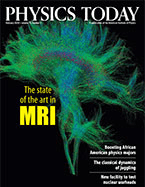
PHYSICS TODAY
Unveiling the Wonders of the Physical WorldPHYSICS TODAY is a prestigious journal published by the American Institute of Physics, serving as a pivotal platform for the dissemination of innovative research and developments in the field of physics and astronomy. With an ISSN of 0031-9228 and an E-ISSN of 1945-0699, this journal has been in circulation since 1948 and is set to continue until 2024. Recognized for its substantial contributions to the scientific community, PHYSICS TODAY holds a significant position within the Q2 quartile of the Physics and Astronomy category as of 2023. Although it does not offer open access, its articles remain crucial resources for researchers, professionals, and students seeking to stay abreast of the latest advancements across a broad range of topics in general physics and astronomy. With a current Scopus ranking of #150 out of 243 and a percentile standing at 38, the journal bolsters its reputation as a reliable source for high-quality scientific discourse. In an era of rapid scientific advancement, PHYSICS TODAY remains dedicated to fostering a deeper understanding of the physical universe, making it an essential read for those invested in the future of physics.

Earth System Science Data
Transforming Earth Science with Collaborative Data SharingEarth System Science Data, published by COPERNICUS GESELLSCHAFT MBH, is a premier open access journal dedicated to advancing the field of Earth and planetary sciences. With an impressive impact factor, it holds a distinguished Q1 ranking in the Earth and Planetary Sciences category, underscoring its significance within the scientific community. Established in 2009, the journal has been committed to providing a platform for the dissemination of high-quality, freely accessible research data that supports the understanding and management of Earth's complex systems. The journal welcomes contributions that offer extensive datasets, innovative methodologies, and collaborations that push the frontiers of Earth sciences, making it an essential resource for researchers, professionals, and students alike. Based in Göttingen, Germany, Earth System Science Data remains a vital asset for those seeking to engage with and contribute to impactful scientific discourse across the globe.
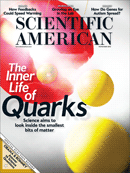
SCIENTIFIC AMERICAN
Bridging Science and Society Since 1947SCIENTIFIC AMERICAN, published by Springer, stands as a prestigious multidisciplinary journal dedicated to disseminating cutting-edge scientific knowledge across a range of fields. Established in 1947, this journal has been integral in bridging the gap between scientific research and public understanding, making complex ideas accessible to a broader audience. With an ISSN of 0036-8733 and E-ISSN of 1946-7087, it maintains a strong standing within the academic community, currently ranked in the Q3 category for its multidisciplinarity, and is positioned at #93 out of 120 in its Scopus ranking, reflecting its valuable contribution to scientific discourse. While the journal is not open access, its long history and commitment to knowledge sharing ensure it remains a vital resource for researchers, professionals, and students alike, fostering a deeper appreciation of science in society.

Iranian Journal of Science
Elevating Research Standards in the Scientific CommunityThe Iranian Journal of Science, published by Springer International Publishing AG, serves as a vital platform for researchers and professionals across a broad spectrum of scientific disciplines. With its focus on general chemistry, agricultural and biological sciences, earth and planetary sciences, mathematics, and physics and astronomy, this journal provides an open-access outlet for innovative and groundbreaking research, facilitating knowledge sharing in the scientific community. Despite its recent establishment from 2023, it is building a reputation for academic rigor, as evidenced by its current Scopus rankings, which position it within the lower percentiles of its field. Researchers interested in interdisciplinary studies will find it increasingly relevant as it aims to enhance scientific discourse across traditional boundaries. Operating out of Germany, this journal seeks to contribute significantly to science by publishing quality research, reinforcing its objective of fostering a collaborative academic environment. As the journal continues to grow, it is poised to become a critical resource for scholars, students, and professionals alike.
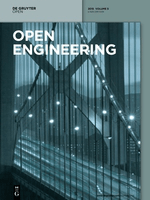
Open Engineering
Pioneering Research That Shapes the Future of EngineeringOpen Engineering, published by DE GRUYTER POLAND SP Z O O, is a pioneering open access journal that has been dedicated to advancing the fields of engineering since its establishment in 2015. With its ISSN 2391-5439 and a commitment to disseminating high-quality research, the journal provides a platform for scholars around the globe to share their innovative findings across multiple engineering disciplines, including Aerospace, Civil and Structural, Electrical and Electronic, Environmental, and Mechanical Engineering. Open Engineering is indexed in Scopus and has achieved respectable rankings, such as 47th in Aerospace Engineering (69th percentile) and 254th in Mechanical Engineering (62nd percentile), showcasing its sustained academic impact. The journal operates under an Open Access model, ensuring that its content is freely available to all, which fosters a collaborative scientific environment and broadens the reach of research outputs. Its objectives include promoting interdisciplinary dialogue and encouraging cutting-edge research that addresses complex engineering challenges. Researchers, professionals, and students looking to contribute to or engage with timely advancements in engineering are invited to explore the breadth of topics covered in this essential publication.
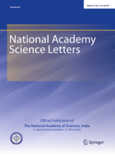
NATIONAL ACADEMY SCIENCE LETTERS-INDIA
Fostering Excellence in Engineering Research and ApplicationsNATIONAL ACADEMY SCIENCE LETTERS-INDIA, published by SPRINGER INDIA, is an esteemed peer-reviewed journal dedicated to advancing knowledge in the field of engineering and its diverse applications. With an ISSN of 0250-541X and an E-ISSN of 2250-1754, this journal serves as a vital platform for researchers and professionals aiming to disseminate their high-quality research findings. Covering a range of topics that intersect engineering disciplines, it holds a respectable Q3 quartile ranking in the Engineering (miscellaneous) category as of 2023, indicating its significant role in the academic community. Located in New Delhi, India, the journal not only provides a valuable forum for innovative ideas from both emerging and established scholars but also emphasizes the importance of scientific research in addressing contemporary global challenges. While currently not offering open access, the NATIONAL ACADEMY SCIENCE LETTERS-INDIA strives to support the development of future technologies and methodologies, inviting contributions that will influence the engineering landscape for years to come.
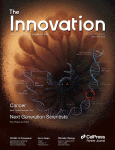
Innovation
Elevating Scholarship Through Open AccessInnovation is an esteemed open-access journal published by CELL PRESS that has emerged as a leading platform for multidisciplinary research since its inception in 2020. With an impressive Scopus rank of #3 out of 171 in the multidisciplinary category and a notable impact factor placing it in the 98th percentile, the journal has quickly established itself as a crucial resource for researchers and professionals seeking to disseminate groundbreaking ideas and developments across various fields. Located in the United States, at 50 Hampshire St, Floor 5, Cambridge, MA, Innovation aims to foster collaboration and innovation by providing unrestricted access to advanced research. Its commitment to excellence is reflected in its categorization as Q1 in 2023, indicating its high citation and influence within the academic community. The journal invites submissions that push the boundaries of knowledge and encourages scholarly discourse, making it an indispensable resource for students, researchers, and practitioners committed to making impactful contributions to their respective fields.
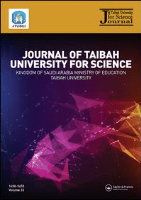
Journal of Taibah University for Science
Transforming Scientific Discourse with Open Access InsightsJournal of Taibah University for Science, published by TAYLOR & FRANCIS LTD, is an esteemed Open Access journal that has been contributing to the fields of Agricultural and Biological Sciences, Biochemistry, Molecular Biology, Chemistry, Earth and Planetary Sciences, Environmental Science, Mathematics, and Physics and Astronomy since 2006. With a commendable impact reflected in its Scopus rankings—standing as high as #10 in Mathematics and #27 in Agricultural and Biological Sciences—the journal maintains a robust reputation in scholarly communication. It processes the latest advancements in multidisciplinary research, shedding light on pressing global challenges, while fostering a dynamic academic exchange. Researchers and professionals looking to stay at the forefront of scientific discourse will find valuable insights and innovative findings in this well-respected publication. The journal is converging its content from 2008-2024, ensuring a rich repository of knowledge that is vital to ongoing and future research efforts.

NATURE
Advancing Scientific Discovery Since 1869NATURE, published by NATURE PORTFOLIO, stands as a premier academic journal in the field of multidisciplinary sciences, and has consistently ranked number one in its category, reflecting its influence and prestige with an impressive 99th percentile position among 171 journals in the Scopus rankings. With an illustrious history dating back to 1869, this journal serves as a critical platform for disseminating pioneering research and groundbreaking discoveries across a myriad of disciplines. While it maintains a traditional publishing model, NATURE's significance is underscored by its high impact factor, making it an essential resource for researchers, professionals, and students seeking to stay at the forefront of scientific advancements. The journal's headquarters are located in Berlin, Germany, and it continues to shape the scientific dialogue globally.